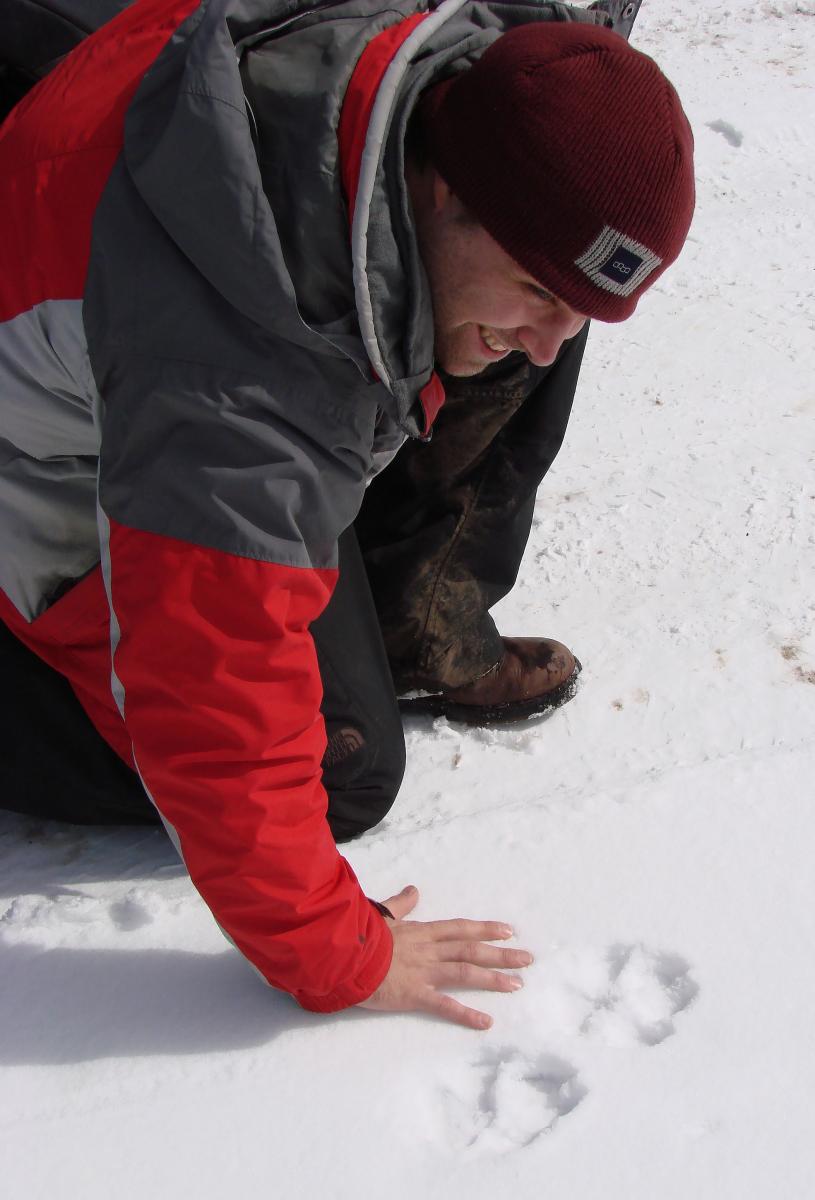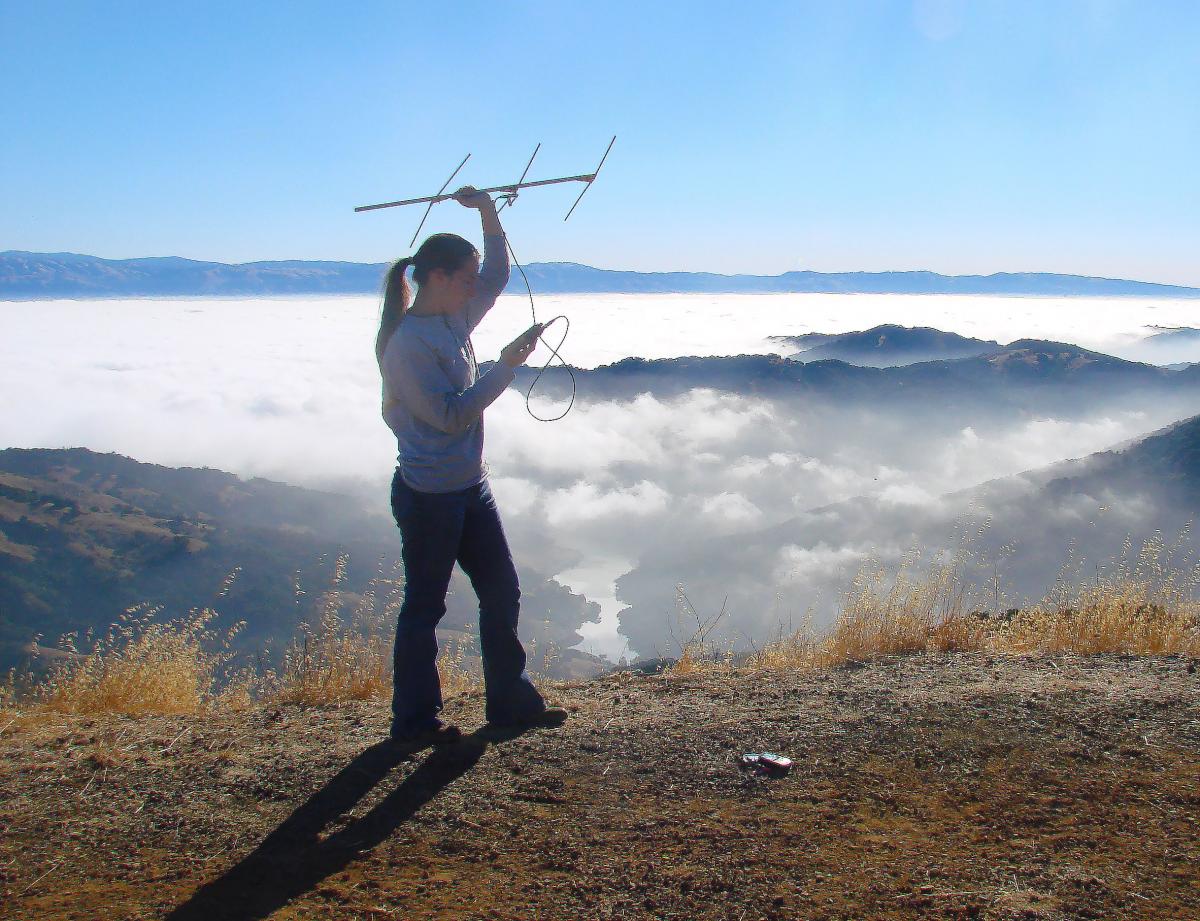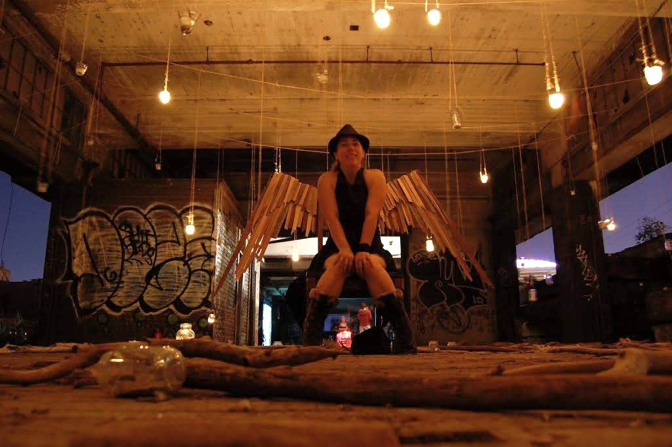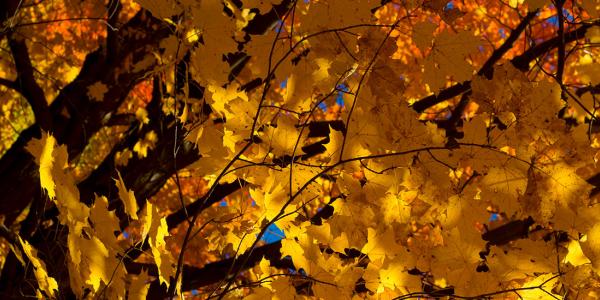Tyson Humanities Fellow Hayley Huntley spent the summer at the university's environmental field station, embedding with the Tyson community to explore the human side of science. Here, Huntley talks with two WashU community members who thrive at the crossroads of artistic expression and scientific inquiry.
In the heart of St. Louis, nestled in a medical research building, Travis Mossotti blurs the line between art and science. Mossotti is a grant analyst at WashU and serves as poet-in-residence at the Endangered Wolf Center, located within the Tyson property, where he volunteers alongside his wife Regina Mossotti, the center’s director of animal care and conservation. His second collection of poems, Field Study, received the 2013 Melissa Lanitis Gregory Poetry Prize and explores scientific inquiry through a poetic lens.

Carrie Goodson, a laboratory manager at Tyson Research Center, is working to understand spatial gradients in Plantago lanceolata (also known as Ribwort Plantain) in the lab of Rachel Penczykowski, assistant professor of biology. She is also a researcher in the lab of Robert Blankenship, the Lucille P. Markey Distinguished Professor of Arts and Sciences. What separates Goodson from other lab managers is her knack for harnessing experiences in the lab and nature to inspire works of art. Goodson has constructed several sculpture installations at Artica, a St. Louis art festival that celebrates the riverfront.
How do these professionals integrate the arts and sciences in their careers? Mossotti and Goodson explain how their seemingly disparate interests meld to enrich their work.
Travis Mossotti:
Why did you choose to focus on science in your poems?
I was engaged in field work as a volunteer, often alongside my wife, who is a field biologist and researcher studying various carnivores. I was holding the clipboard while they were processing the kill sites [a location where a predator that has caught its prey can be identified]. I was out there in the mix, and I felt obligated to not let those experiences go unrecognized. There are books that you want to write as an author, and then there are books that you have to write. This felt like the latter.
What is a strength of using poems to describe your experience with scientific research?
I have a profound connection with conservation; I've been engaged in data collection, capture and releases, and lab work for various projects. I find a sense of wonder in trying to find where the overlaps exist between the humanities, between the arts and sciences. How can ordinary humans interface with the ideas that scientists are exploring?
The audience for my work is often very different from those who read scientific journals. It's empowering for people who find points of connection to science. I think poetry can help make that connection.

Do you have a specific memory from talking to the public about your conservation work?
I have spoken at numerous high schools and universities about my experience as a writer who’s engaged in the field of conservation science. I'll sometimes present to 300 or 400 students in an auditorium, but I remember sitting down and talking with Robert Hass and a small group of his students at the University of California, Berkeley, who were following an interdisciplinary track. These were students who, like me, were trying to have an impact in the arts and in the sciences. I kept thinking to myself how unique it was — to be able to offer an outlet to students and let them know that they need not be just one thing. That experience shifted my perspective and made me feel like there were more people out there, just like me, who wanted to have an impact in more than one field.
What other advice would you give to students?
I don’t advocate necessarily for the institution of marriage, but I do advocate for, if you were going to partner yourself off with somebody, partner yourself off with somebody who's in a different discipline and who is as passionate as you are. My writing style is more immersed in discovery within the world in which people live – or don't live, in the case of the wild. Having my partner there gave me the confidence that I needed to believe I could have this point of access; I could feel a level of confidence about my scientific experiences.
Carrie Goodson:
What parallels do you see in your art and your science?

The people who make the best science researchers are able to imagine creative ways to devise a piece of equipment that doesn’t exist. Nobody’s making it, but you have to figure out a way to solve a problem in your research. In the Blankenship lab they do this quite often with LED setups for growing plants, constructing cabinets, and finding creative ways to deal with hydroponics. The skills I learned, with welding and making sculptures, will help someday in making a piece of scientific equipment.
How does a creative mind help with your science?
You can imagine something that maybe you hadn't at the beginning, or if you're seeing something unexplained, you are better able to recognize that without blinders. I actually have a patent on algae, from when we were trying to make biofuels in the [Ursula] Goodenough lab. The algae had kind of ballooned up with the lipid; it had these vesicles, these spheres of lipid, and it was so cool. We hadn't seen that before. I actually asked someone to look at it and they didn't see it. I don't know if I can attribute that to their personal blinders, but being able to recognize patterns, having spatial awareness, it helps me.
What inspires your art?
I think it is important to have a story or a feeling in your mind, and it doesn't have to be that somebody else gets that explicitly. That’s what art is: You bring your own interpretation. But if you have that strong feeling or strong direction, then I feel that's what makes it good art.
What advice can you give to students?
We are sold on this idea that you can just pick one field, right? It's not always that way. You do not have to stick to just one trajectory. That was always a real struggle for me: Which one am I going to pick? The answer is, really, you don’t have to pick one. The nature I experience around me here at Tyson is inspiring my art, which is also related to my interest in science and biology.




